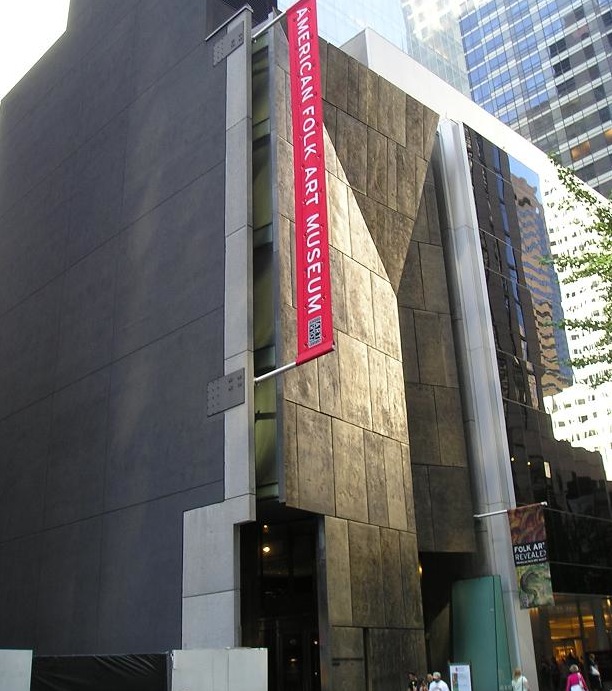The American Folk Art Museum by architects Tod Williams and Billie Tsien opened in 2001 to wide acclaim, thanks, in part, to its distinctive faceted, bronze façade.
But just 12 years after opening the building, the Museum of Modern Art (MoMA) plans to demolish the structure to make way for an expansion that will more seamlessly connect with adjacent MoMA buildings on the MoMA campus in Manhattan, according to the New York Times.
In 2011, MoMA purchased the building from the struggling folk art museum, which was millions in debt due to lower-than-expected attendance and investment losses stemming from the recent recession.
Museum officials claim that because the building is set back farther than the other buildings on the property, the floors cannot be aligned. In addition, its solid façade does not meld with the mostly all-glass enclosures on the museum campus.
In an interview with NYT, Tsien said she was "really disappointed" by the announcement and called the move a "loss for architecture," especially because the building is an increasingly rare example of a small yet well-crafted structure.
(http://www.nytimes.com/2013/04/11/arts/design/moma-to-raze-ex-american-folk-art-museum-building.html?_r=1&)
Related Stories
| Mar 7, 2014
Thom Mayne's high-tech Emerson College LA campus opens in Hollywood [slideshow]
The $85 million, 10-story vertical campus takes the shape of a massive, shimmering aircraft hangar, housing a sculptural, glass-and-aluminum base building.
| Mar 7, 2014
Learning from common leadership errors
As a leader in the AEC world, you’ll likely find yourself making certain mistakes over the course of your career. Here are a few common leadership errors that can easily be avoided.
| Mar 6, 2014
BD+C wants to hear about your breakthrough ideas and projects for the Giants 300 report
BD+C's 2014 Giants 300 survey form is now available. But completing the survey is just one way to participate in the July Giants issue.
| Mar 6, 2014
Must see: Tour Seinfeld's apartment with virtual reality headset
Fans of the show can now explore a virtual 3D model of the iconic New York residence, thanks to one Web designer's painstaking effort.
| Mar 5, 2014
5 tile design trends for 2014
Beveled, geometric, and high-tech patterns are among the hot ceramic tile trends, say tile design experts.
| Mar 4, 2014
How EIFS came to America
Design experts from Hoffmann Architects offer a brief history of exterior insulation and finish systems in the U.S.
| Mar 4, 2014
If there’s no ‘STEM crisis,’ why build more STEM schools?
Before you get your shorts in a knot, I have nothing against science, technology, engineering, or even mathematics; to the contrary, I love all four “STEM” disciplines (I’m lying about the math). But I question whether we need to be building K-12 schools that overly emphasize or are totally devoted to STEM.
| Mar 3, 2014
Negotiate your way to success
There are few business skills as important as negotiation. Many successful businesspeople pride themselves on their ability to turn a deal in their favor. Here are a few key negotiation principles to ensure you’re generally getting a good deal.
| Mar 3, 2014
5 ways to gain clients you actually like
Gaining more clients is one thing. Gaining more clients that you actually like is something else entirely. Here are some tips to perfect the art of attracting and retaining clients that you enjoy working with.
| Mar 3, 2014
Engineering and construction CEOs are cautiously optimistic about the global economy, says PwC
Firm leaders remain leery about the availability of skilled workers, the state of government debt and deficits, and rising material prices, according to PwC’s 2014 Global CEO Survey.

















